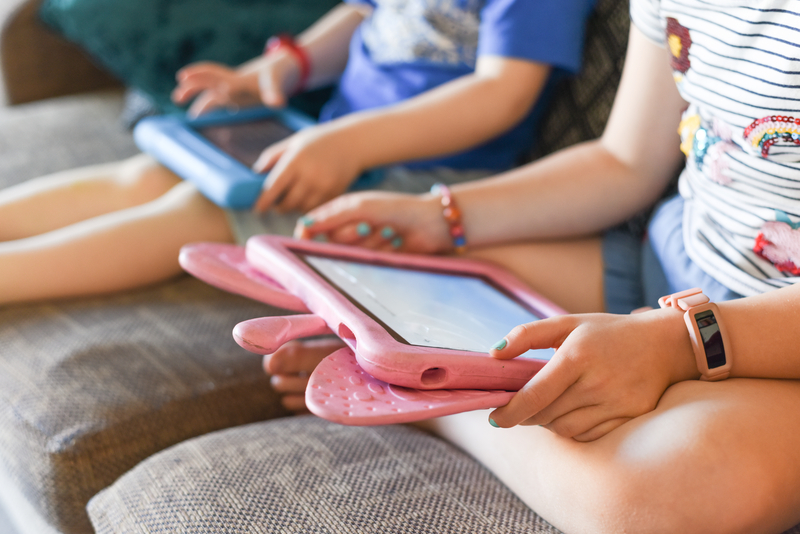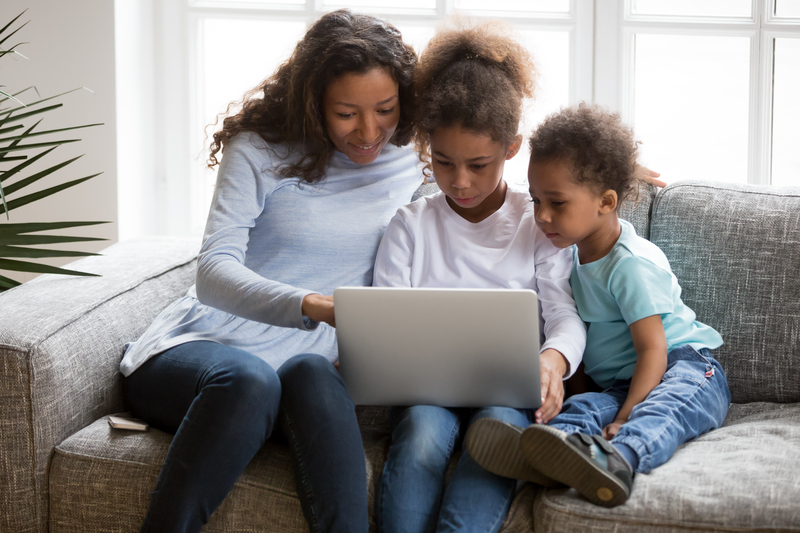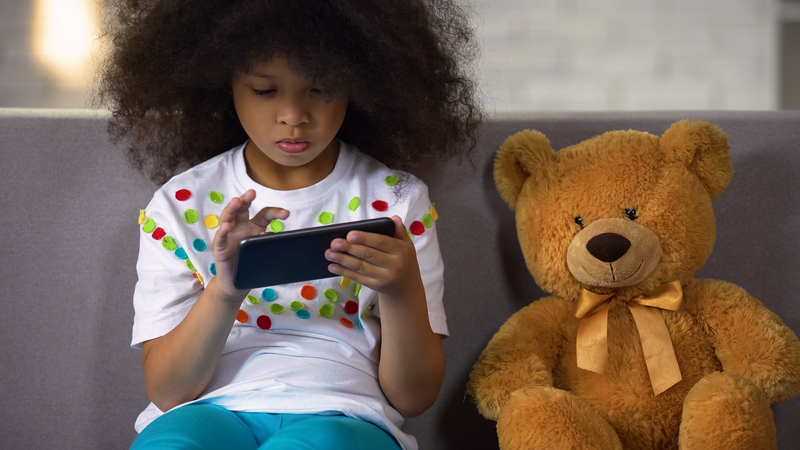Reading on screen has received a lot of bad press for its damaging effect on readers’ concentration levels. However, digital books, such as e-books and interactive apps, can meaningfully expand the reading repertoire of young children. When digital books are well-designed, they can cater to the learning needs of all children including those who typically need most support.
Practical advantages of digital books

Digital books have several practical assets that position them ahead of print books: e-books are readily available on devices that children from low-income families already have in their hands. Individual titles are cheaper to buy and easier to distribute on scale. It follows that replacing digital reading with print reading would remove access to texts and stories for children who do not, and cannot have, print books.
Seeing the digital format as an asset implies valuing the unique sharing opportunities of e-books. E-books are an important learning and entertainment tool in situations when physical contact is not possible. The COVID-19 pandemic amplified the gaps between families regarding the access to physical educational resources and the educational support children get in using the resources. This gap is also apparent for children during illness, war conflict or who have parents in prison. The digital reading format lends itself to the online experience of anytime, anywhere sharing.
A unique quality of digital reading is that the text can be customised to suit the child’s reading needs in terms of font size or display of images by zooming in and out, but also personalised in terms of the reading content. Personalisation can be provided both in terms of direct feedback and content served to the reader during the activity. Some digital books and reading platforms have embedded algorithms which adapt the reading difficulty and support provided to the child when they read on their own. These benefits are not without issues and close attention needs to be paid to the way children’s progress is monitored and used for supporting their learning. Another key issue is the quality of texts available for children’s digital reading.
Quality of children’s e-books
The average quality of current children’s digital books is, when judged using research-based criteria, lower than that on paper. This has direct consequences for children’s learning. In our recent meta-analysis of previously published research on digital picture books for young children aged 1–8 years, we concluded that, without the right design, digital books are inferior to print versions. Low-quality digital books interfere with children’s understanding of the narrative and can also impede their vocabulary learning. However, and this is a crucial point, if the quality of the digital books is high, they significantly outperform print books and advance children’s learning.
An immediate question to ask is what constitutes a high-quality digital book and how good quality can be achieved. There are several ways of looking at the quality of children’s digital books. In our meta-analysis, we categorised digital books in terms of enhancements that are story-related and those that are not story-related. An example of a story-related enhancement is a prompt question for the child that makes them reflect on the story content. An example of enhancements that are not helpful for story comprehension are mini-games that distract children and often overwhelm them. In a study where researchers analysed best-selling children’s e-books sold for the 0–8-year-olds age range in Hungary, Turkey, Greece and the Netherlands, a quality criterion was also whether the e-book was available in the local language.
To ensure that e-books are developed with more research-based quality features, we need a close collaboration between researchers and designers. We also need teachers’ and children’s voices in identifying what works in the classrooms and what creates enjoyable reading at home. Network-based efforts such as the one supported by the UNESCO Inclusive Policy Lab are important resources for facilitating the cross-sectoral dialogue necessary here.

Upholding the principles of equality and diversity
Confident and successful child readers thrive with diverse types of content, genres and formats. The learning potential of digital books has been researched since their first appearance on the market in early 2010s. In comparison to the long history of print reading, research on digital books is still in its infancy, but one thing is clear: digital reading has an important added learning value for children with special needs, reading difficulties or little history of reading at home. For these children, digital reading is often the default way of accessing stories and knowledge about the world without many alternatives.
The bottom line is: digital books ensure that all children can have a varied reading diet and grow their reading curiosity. To convert this immense potential of e-books, we need to make sure that e-books are of high quality.
Natalia Kucirkova is Professor of Reading and Children’s Development, The Open University, and Chair of the International Collective of Children’s Digital Books.




Rate and Review
Rate this article
Review this article
Log into OpenLearn to leave reviews and join in the conversation.
Article reviews